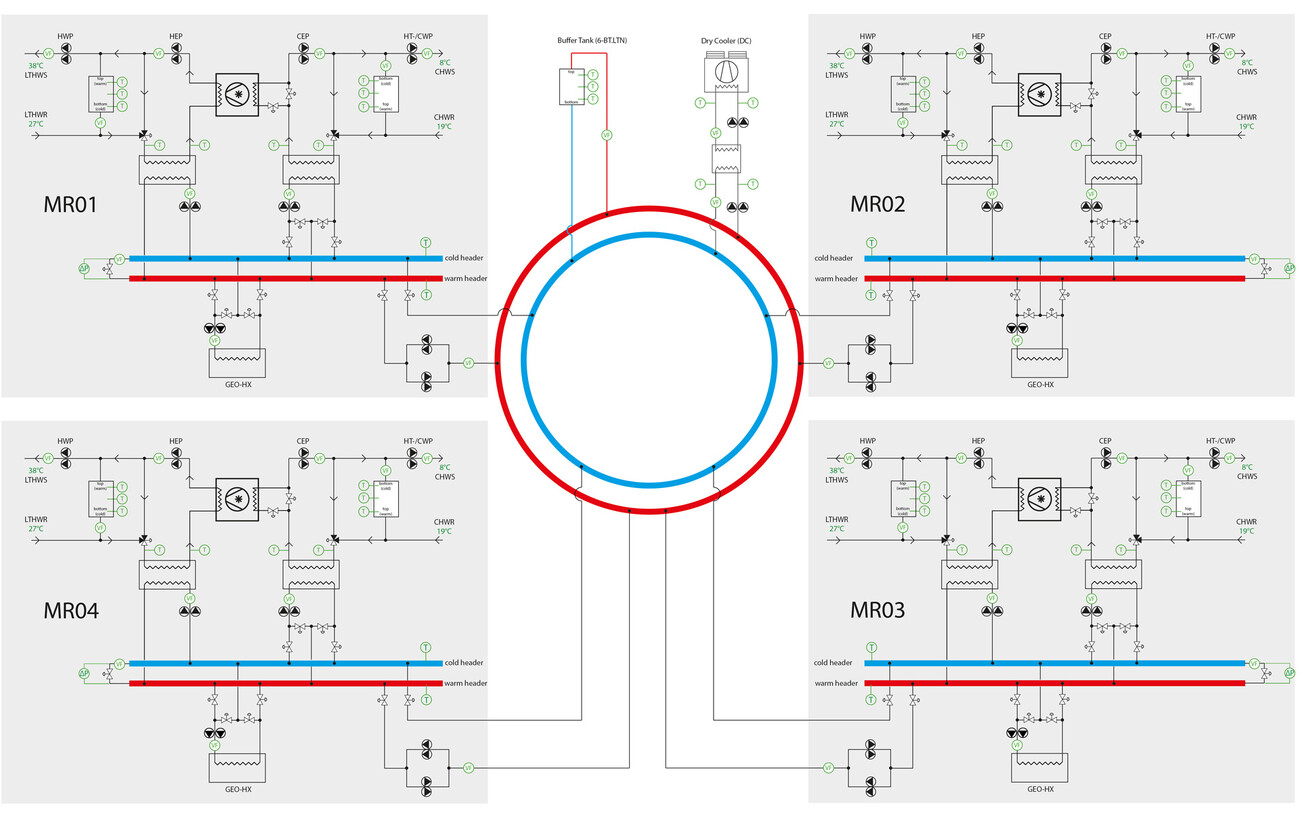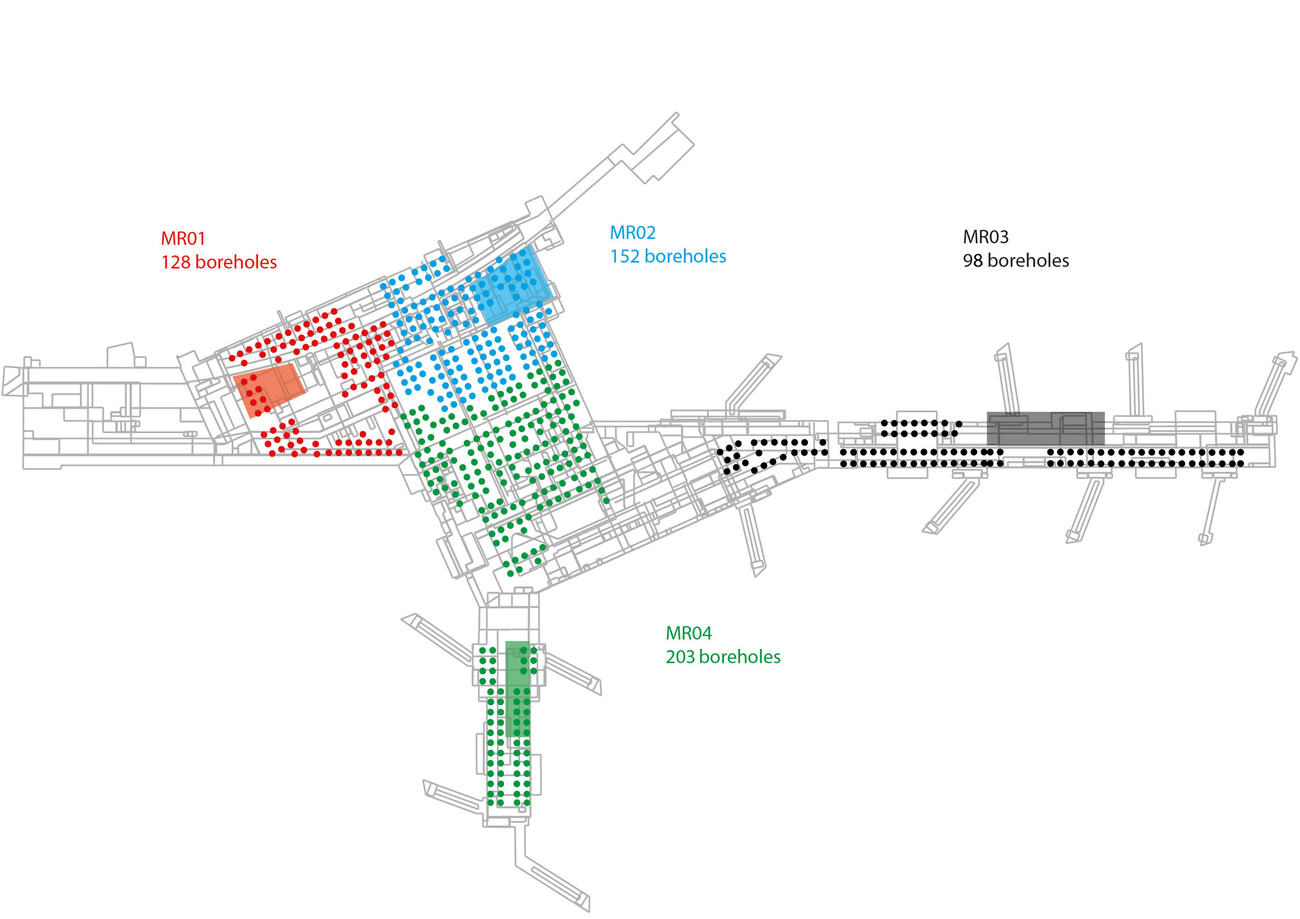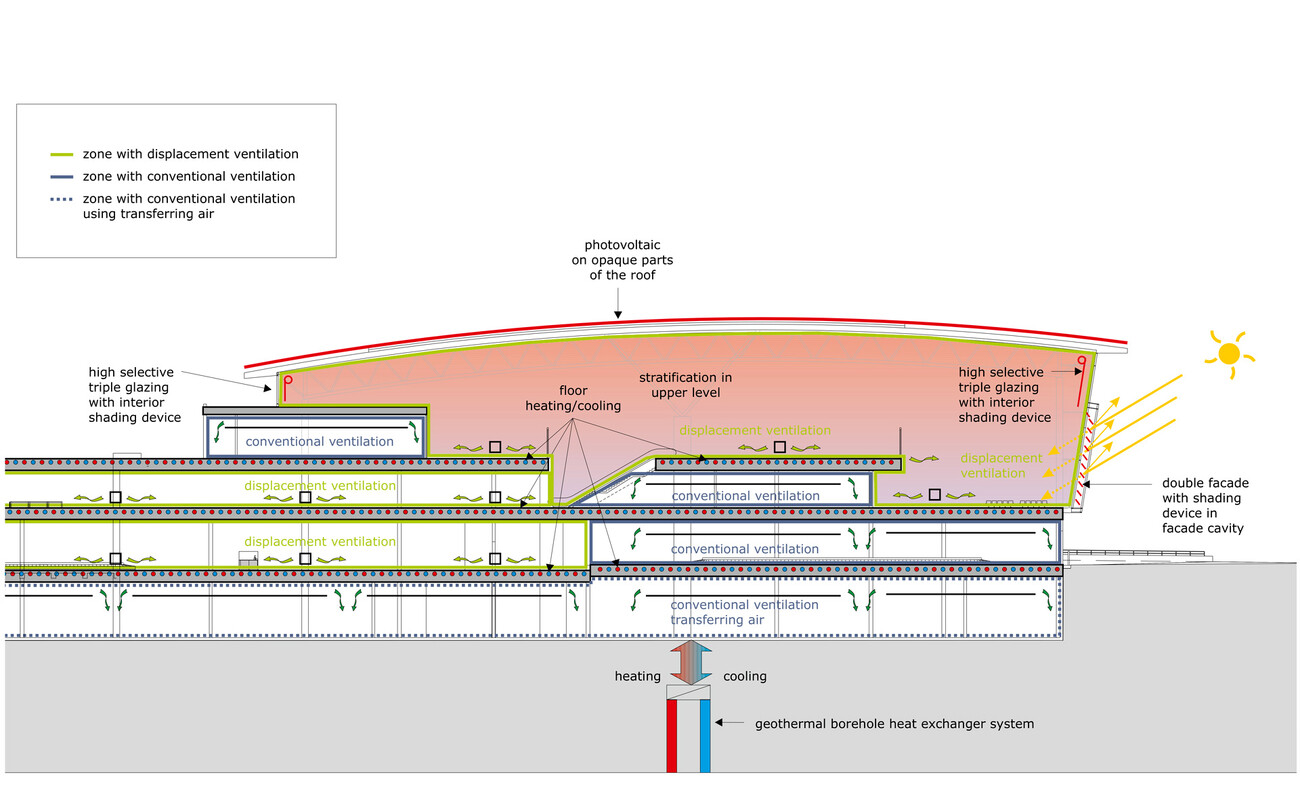Extension Calgary International Airport, Calgary, AB, Canada


Warm summers and cold winters characterize the climate in the prairie near the Rocky Mountains. Additionally, the autumn wind "Chinook" can increase winter air temperatures from -20°C to +10°C (-4°F to 10°F) or more within hours, which then fall back to baseline. The wind speed can be over 120 km/h. The new construction of the international airport in Calgary doubles the capacity of the existing one.
Through an integrated design team approach an optimized climate and energy concept was developed for the IFP Expansion of Calgary International Airport. It achieves natural daylight in public areas through optimized roof skylights with selective coatings and embedded micro louver structures for control of solar gains.
Highly solar exposed facades use a controlled ventilated secondary skin with efficient shading within the facade gap to optimize solar gains and daylight control. Less solar exposed northern facades are equipped with triple glazing and neutral selective coatings to minimize heat losses in winter and control solar gains in summer morning and evening hours. Opaque facades are well insulated and all facades are sealed against infiltration losses.
A hydronic radiant floor system is used in public areas for silent heating and cooling. To further reduce cooling loads for big volumes thermal stratification of room air is used in combination with the radiant floor system. Office spaces are equipped with radiant chilled ceiling systems.
Low pressure displacement ventilation systems with highly efficient exhaust air heat and humidity recovery and occupancy controlled outdoor air ventilation rates optimize comfort and minimize electricity for air transport.
The energy generation system uses vertical bore holes below the basement for ground heat exchange.
With 580 ground probes of 500 ft. (approx. 150 m) depth distributed across four areas, it is the largest geothermal field in western Canada. A low temperature network of roughly 1 km (about 3,000 ft.) is interconnecting main mechanical rooms for heat recovery with N+1 redundancy and decentralized cogeneration units which efficiently produce heat and power. The building roof is ready to integrate PV systems for solar power generation.






